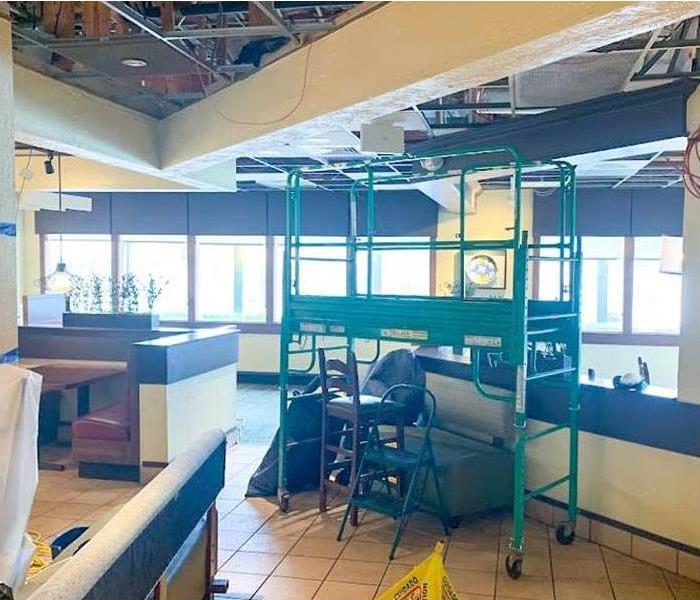The 4 Components of a Damage Assessment
4/26/2022 (Permalink)
A Damage Assessment's Four Components
If your business in N.C. State University, NC, suffers water damage, seek a capable cleanup and restoration company to get your property back in shape. During the initial inspection, known as pretesting, the company associate assesses the damage done to the property to determine what can be restored. This reduces the cost of your insurance claim by preventing the unnecessary replacement of repairable damage. You should expect the assessment to consist of these four steps.
1. Inspection of Damage
The associate assesses how much damage the water has caused, inspecting the affected areas to determine whether restoration or replacement will be needed. Additionally, the professional will check for any dangers in the area, such as lead, asbestos and unsafe electrical outlets.
2. Addressing Ongoing Leaks
If there is still water leaking on the property, it is necessary to identify the source and stop its flow. The associate should check for any sources of contamination of the water as well.
3. Testing the Water
Pretesting involves classifying the water contamination into one of three categories:
- White Water – Water with no substantial contaminants
- Gray Water – Water containing microorganisms, as found in septic water
- Black Water – Water containing dangerous bacteria or fungi
If the water is coming from an overflowing sink or broken supply line, it is most likely to be white water. Gray and black water can be the result of contamination from standing water, sea and river water, or sewage.
4. Preparing the Area for Water Removal
Before moving forward in the restoration process, the area needs to be cleared of any furniture or carpets in the way and subject to water damage.
Once the pretesting has been done, your property is ready for the next steps of restoration. It’s a good idea to discuss this process with your insurance agent so that you can be prepared in the unfortunate event of water damage.


 24/7 Emergency Service
24/7 Emergency Service
